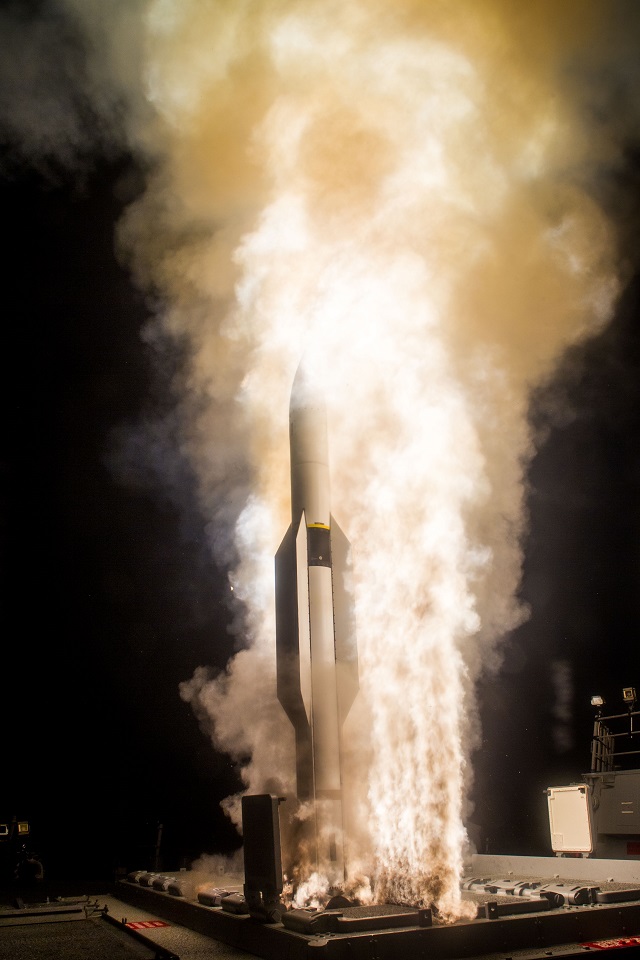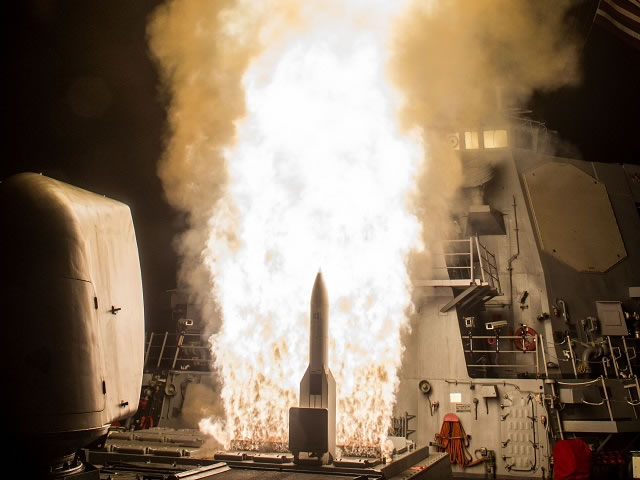|
|
|||
 File picture: Arleigh Burke-class destroyer USS John Paul Jones (DDG 53) built by Bath Iron Works. File picture: Arleigh Burke-class destroyer USS John Paul Jones (DDG 53) built by Bath Iron Works. (Picture: US Navy) |
|||
|
|
|||
| About SM-6 The multi-mission SM-6 delivers proven over-the-horizon, air defense through the time-tested advantages of the Standard Missile's airframe and propulsion. SM-6 uses both active and semi-active guidance modes and advanced fuzing techniques. It incorporates the advanced signal processing and guidance control capabilities of Raytheon's Advanced Medium-Range Air-to-Air Missile, or AMRAAM. SM-6 delivers multi-mission capability for long-range Fleet Air Defense, Sea-Based Terminal defense, and Anti-Surface Warfare |
|||
|
|
|||
 File picture: The Missile Defense Agency and sailors aboard USS John Paul Jones (DDG 53), an Aegis baseline 9.C1 equipped destroyer, successfully fired a salvo of two SM-6 Dual I missiles against a complex medium-range ballistic missile target, demonstrating the Sea Based Terminal endo-atmospheric defensive capability and meeting the test's primary objective. File picture: The Missile Defense Agency and sailors aboard USS John Paul Jones (DDG 53), an Aegis baseline 9.C1 equipped destroyer, successfully fired a salvo of two SM-6 Dual I missiles against a complex medium-range ballistic missile target, demonstrating the Sea Based Terminal endo-atmospheric defensive capability and meeting the test's primary objective. |
|||
Raytheon SM-6 testing displays missile's range and versatility in US Navy Tests
- Posted On











